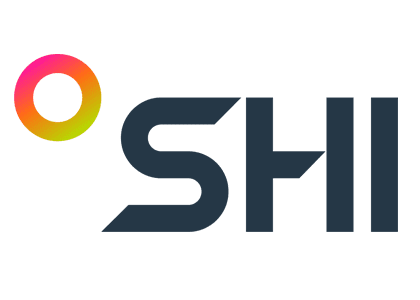What is an Effective License Position and why do you need one?:
How to establish and optimize your license position – and when you should do it

The world runs on…? While many might argue it’s coffee, love, or optimism, in business, the world runs on software. Lots of it.
And although it comes in many shapes and sizes, the almost-ubiquitous commonality that underpins all commercial software is that it must be licensed. Whether purchased outright on a perpetual basis — or more commonly, through a time-bound subscription, software licensing has been a major headache ever since the inception of personal computing.
Ask anyone in an IT Asset Management (ITAM) or Software Asset Management (SAM) function how they know if their organization is properly and optimally licensed for the software it’s using and you might see the color instantly drain from their face.
That’s because they know just how difficult it is to create an accurate and comprehensive Effective License Position, the cornerstone of any SAM function.
But for those of us not familiar, what is an Effective License Position, and why does your organization need one?
What is an ELP?
Effective License Position, or ELP for short, is a term originally coined by Microsoft to refer to an organization’s software licensing compliance position. An ELP is essentially a reconciliation of your current license entitlement against your current software consumption.
It is used by SAM practitioners and procurement managers to help identify whether the organization is under-licensed (usage exceeding or outside the terms and conditions of your contract, a potential audit risk) or whether you are over-licensed (meaning you have a surplus of licenses, or ‘shelfware’), a sure indicator of overspending that needs addressing prior to an annual true-up or renewal date.
By helping you reconcile what you’re using with what you’re licensed for, the data gathered can be critical to right-sizing your environment ahead of your next true-up or renewal.
It’s important to note that, as software providers create more options (read: complexity) in their licensing models, and with many vendors moving to Software-as-a-Service subscription-based licensing models, the ELP becomes even more useful for exercising financial governance and optimizing consumption and spending.
For more information on getting greater visibility into your SaaS application usage and spend, and for recommendations on optimizing cloud-based subscriptions, check out SHI’s SaaS and 365 Insights services).
So, how do you go about establishing an ELP?
With the right tools and skills, you can do it in-house. However, if your organization is licensing software from 20-plus vendors and has a mix of licensing types across different environments (desktop, data center, mobile), you would be well-advised to seek specialist help from ITAM teams like the one at SHI.
Here’s how we create an Effective (and optimized) License Position.
SHI’s 4-step methodology
Using a four-step methodology, our licensing experts establish your current licensing position for in-scope publishers – and even go a step further by delivering recommendations on how to optimize it.
Step #1: Entitlement Position
We kick off the process by creating a single, reliable view of your entitlements.
Our experts analyze your license reports and review what software you’re entitled to by consolidating information from a variety of disparate sources, including:
- Original and electronic copies of your licenses and contracts.
- Documentation from software publishers or their license management portals.
- Transactional data from resellers and licensing providers.
This allows you to approach your next true-up or renewal armed with data on what you’re currently using and what you will or will not need going forward.
Step #2: Deployment Position
Next, we identify software consumption across your organization.
We’ll reveal how your software is being deployed across your entire organization – on-premises, in the cloud, or hybrid – by taking the following steps:
- Inventory all deployed operating systems, applications, and databases for the in-scope publisher(s).
- Install and run discovery tools to recognize all deployed software and accurately identify the applications (including editions and versions) you have running in your environment.
- Collect comprehensive hardware configuration information to understand the relational components of the licenses you have running on your hardware devices, including in virtual and cloud environments.
Step #3: Effective License Position
This is where SHI’s Software Asset Management (SAM) experts get into the nuts and bolts of performing a reconciliation and gap analysis using data provided in steps one and two. Our SAM team pores through the details looking for any of the following:
- Licensing shortfalls exposing you to compliance risks.
- Usage outside the contract terms and conditions, indicating potential compliance risks.
- Surpluses, which indicate overspending. Our experts can help identify areas of under- or unused licenses ripe for re-harvesting, downgrade, or cancellation.
Step 4: Optimized License Position
SHI provides actionable insights and optimization recommendations during this last, crucial step. Our specialists look at all options across the platforms, apps, and vendors in the scope of the ELP, providing you with a full range of optimization recommendations including:
- Identifying under-used software for redeployment to new users.
- Adjusting licensing programs to better fit actual consumption.
- Upgrading license agreements where better financial terms are available.
- Negotiating with vendors to trade unwanted licenses for new subscriptions.
When do we recommend doing an ELP?
It’s always smart to be informed about your licensing position, but there are a few key milestones that warrant
1. In advance of a renewal
An ELP (or, as we call it at SHI, an Optimized License Position), is a snapshot in time. Because of the dynamic nature of software and IT in general, your environment is always changing.
In our ebook, “4 things you must do before you renew your Microsoft Enterprise Agreement”, we recommend you start working on optimizing your renewal at least 12 months out. A lot can happen in three years, whether within your current usage, your entitlement usage rights, or sweeping programmatic changes to the program covered by your EA.
So we advise establishing an Optimized License Position at least six months in advance of your anniversary date to ensure you understand your current entitlements and usage. This data allows SHI’s Microsoft Licensing Advisory specialists to begin modeling the licensing scenarios that best align with your current and future IT strategy and meet your budgetary requirements.
“I tell my customers it’s never too early to assess your license position for your strategic publishers,” SHI’s Sr. ITAM Services Manager Danielle Kraft explains. “But I definitely recommend they do it at least six months prior to an annual true-up or renewal anniversary. That gives them sufficient time to assess the results and make budgetary decisions. Plus, you’ll be surprised how much things can change, especially with so many vendors coming out with new subscription-based licensing models.”
2. In advance of an annual true-up
Many organizations also come to SHI to perform an Optimized License Position in preparation for an annual true-up, whether that be with Microsoft, Adobe, Oracle, SAP, IBM, or any other strategic vendor.
As an example, with their first annual true-up date fast approaching on a three-year Microsoft EA Agreement, Panduit Corporation approached SHI to ensure they were compliant with their Microsoft licensing. Within eight weeks, SHI not only confirmed compliance, but also identified opportunities to save approximately $102,000 across their SQL and System Center environments.
In this case, not only did we provide expert advice and analysis to our customer regarding compliance and license usage, but we also laid out several opportunities to optimize their investment. Furthermore, by leaving the heavy lifting to our experts, Panduit’s internal team didn’t need to dedicate valuable time and resources to analyzing the data and deciphering Microsoft’s licensing requirements on their own.
3. Before engaging in a software vendor audit
As a practice, you never want to engage in an audit discussion with a vendor or auditor until you have all your ducks in a row. Engage your ITAM partner as soon as possible to gather the data needed to assess your license position. Your partner will then validate the data and use it to verify the accuracy of the vendor’s claims and prepare an appropriate course of action.
Remember, engage early and don’t wait until the last minute!
4. As a periodic health check
We also recommend doing periodic health checks on your estate to stay on top of what you have running across your environment. It’s always good practice to perform periodic health checks so you can remediate any problems early, before they become a compliance, security, or financial risk to your organization.
SHI’s IT Asset Management team provides ITAM and SAM services for a wealth of organizations, helping optimize both the big-spend vendors like Microsoft and Oracle as well as niche suppliers you license software from. You can learn more about the full portfolio of ITAM services here.
Reach out to our ITAM team today at ITAM@SHI.com to get started.




